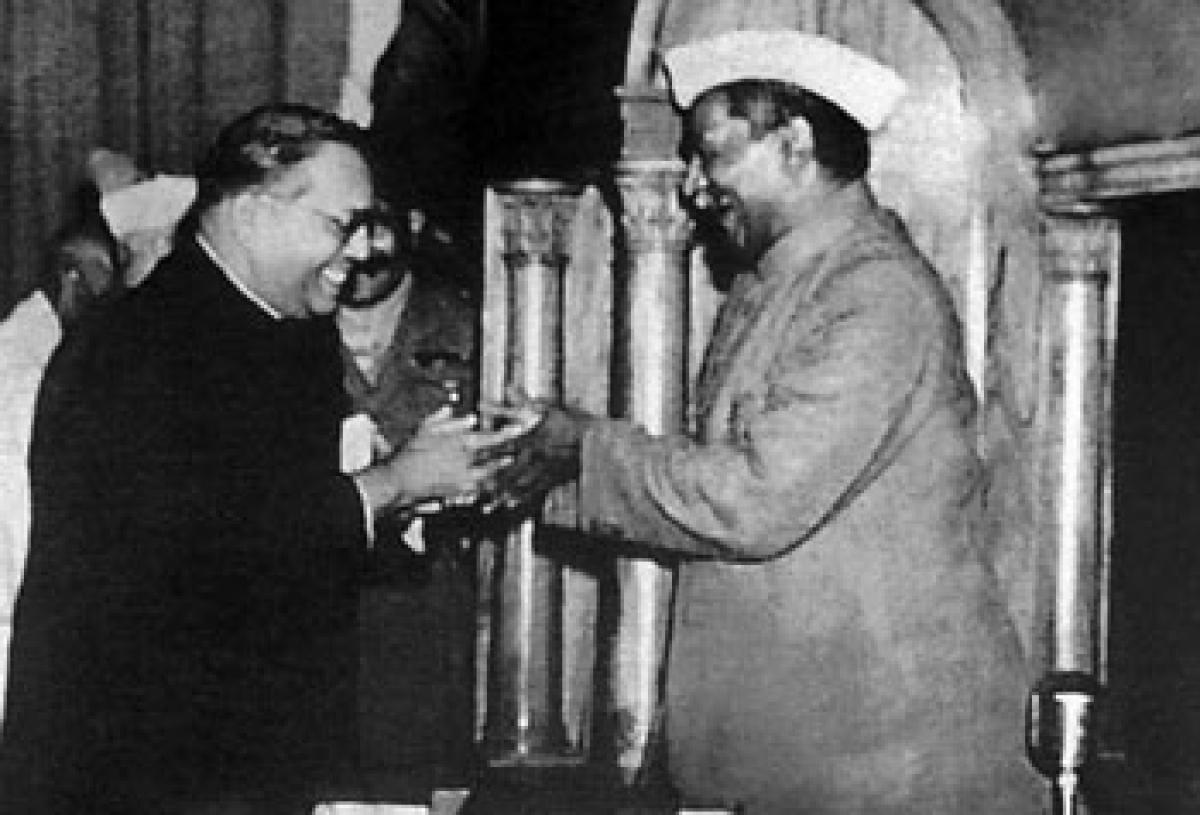Live
- OnePlus 12 Price Slashes to Rs 52,999 Ahead of OnePlus 13 Launch
- Vijayawada: Christmas celebrated at PB Siddhartha
- Tremors due to adjustments in Gundlakamma fault: Scientists
- IG lauds police for crime control in district
- Revised biography of Naveen not based on facts: BJD
- Churches decked up to celebrate Christmas
- Meeting on fee regulation held
- Allu Arjun Questioned in Sandhya Theater Stampede Case: Investigation Updates
- Christmas festivities pervade Warangal
- TTD announces the schedule for release of March 2025 quota tokens
Just In

November 26 is remembered as one of momentous days in the annals of the Indian constitutional history. On this day, the Constitution of India was finally adopted by the Constituent Assembly.
 Today is National Law Day
Today is National Law Day
November 26 is remembered as one of momentous days in the annals of the Indian constitutional history. On this day, the Constitution of India was finally adopted by the Constituent Assembly. It is one of the historical and memorable days not only for our country but also for the entire third world countries. As a mark of adoption of the Constitution, every year we celebrate the day as the National Law Day. If we observe the process of constitutional-making in the country, though it officially started after our country became an independent nation, the process had undergone a chequered journey from the days of Mento Marlo Reforms of 1909 through the Government of India Act of 1935.
The imperial British government without consulting the then elected State governments and political parties forced the Indian soldiers to participate in the Second World War that led to widespread protests, and ultimately the British government representative, Viceroy Lord Lingthlow, had conceded a demand that it would grant independence to us after the end of the Second World War. Following upon that assurance, the British government passed the Indian Independence Act in 1947. Prior to this, the then government constituted the Constituent Assembly to frame the Constitution.
The Constituent Assembly comprise 389 members belonging to different political spectrum in which the Congress Party had 208 members; the second largest party was Muslim League with 73 members and the remaining were from other parties and dominions existing at that time. Later, Muslim League demanded creation of the separate State of Pakistan and boycotted the session. During that time, the country witnessed a large-scale carnage of riots between Hindus and Muslims, and to overcome the situation, the then last Governor General, Lord Mountbatten, announced division of the country into two nations along the religious lines.
In the united country, the Constituent Assembly’s first session was conducted under presidentship of Dr Sachhidananda Sinha on 19th July, 1946. After the country was divided, Dr Rajendra Prasad was elected as the president, Dr B R Ambedkar as the Chairman of the Drafting Committee and Sir Benegal Narasinga Rao as the Chief Advisor. The total work of the Assembly was classified into five committees. The Assembly consisted of legal luminaries of the day, including Pandit Jawaharlal Nehru, Sardar Patel, Pattabhi, Krishna Swamy Ayyanger etc. The Assembly had the huge and critical task of preparing a sacrosanct document so it would answer all the challenges of future generations.
During the foreign rule, the country underwent all sorts of miseries which cannot be repeated in the future. With this motto, the Constitution makers scrupulously analysed the existing Constitutions around the world and incorporated some of the best features like parliamentary form of government from Britain, fundamental rights from the United States, directive principles of state policies from Ireland, trade and commerce rules among the States of Australia, the Centre-State relations and distributions of powers between central and state governments from Canada, emergency provisions from the Soviet Union, amendments from French constitution, and independency judiciary from German constitution. Because of this reason, our constitution became the bulkiest document.
Our Constitution incorporated the best practices of democracy existing around the world. At the time of adoption, the Constitution had 394 articles divided into 22 parts and 8 schedules. Every word which was inserted in it was thoroughly debated and discussed. During such debates, 7,635 amendments were moved and 2,427 were accepted. The Constituent Assembly sat for 11 sessions and it incurred Rs 6.3 crore expenditure. It took two years, 11 months and 18 days to prepare it, realising the dreams of the 40 crore people.
The great journey of the Constitution began on 26th January, 1950, and since then, the Constitution has been successfully guiding the nation. It faced unseeming challenges and showed its abilities to resolve all critical issues with success. Our Constitution became the torch-bearer for many African, Latin American and South East Asian nations, and they incorporated most features from it. We can say that our Constitution is responsible for social, economic, political harmony and development of the nation and in years to come it would certainly guide the nation to its all-round development and reach its destiny for attainment of egalitarian society. (The writer is Head and Principal, University College of Law, Telangana University, Nizamabad)
By Dr Jetling Yellosa

© 2024 Hyderabad Media House Limited/The Hans India. All rights reserved. Powered by hocalwire.com







